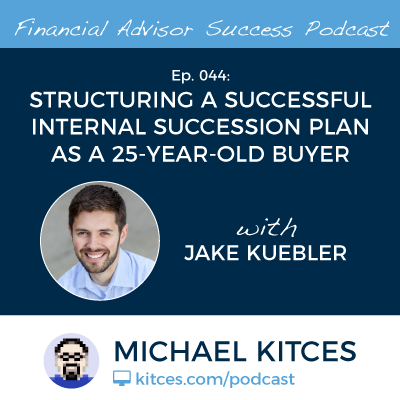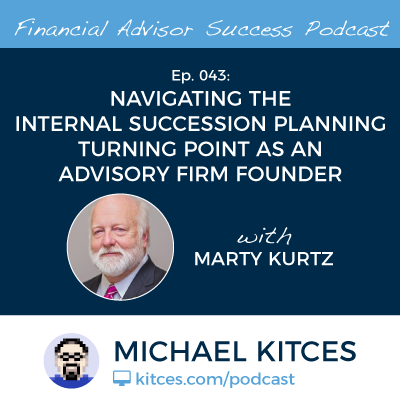Since 2004, brokers moving from one wirehouse or broker-dealer to another, or breaking away entirely to the RIA channel, have relied on the Broker Protocol to set the rules for switching firms without fear of being sued. However, the big news this week is that Morgan Stanley – the largest wirehouse by advisor headcount – is leaving the Broker Protocol effective Friday November 3rd, in what is likely the beginning of the end of the Broker Protocol, and a reversion back to the dark days of breakaway lawsuits.
In this week’s #OfficeHours with @MichaelKitces, my Tuesday 1PM EST broadcast via Periscope, we discuss why Morgan Stanley leaving the Broker Protocol is likely to result in the unraveling of the Broker Protocol, and the subsequent implications, including reduced payouts at wirehouses and a compression of advisory firm valuations for those at broker-dealers.
For those that are unaware, the Broker Protocol stipulates the specific five pieces of information (client names, addresses, phone numbers, email addresses, and account titles) that departing brokers can take with them without fear of being sued for violating the firm’s non-solicit agreements or any client privacy and confidentiality obligations under Reg S-P. Originally put in place by Merrill Lynch, UBS, and Smith Barney (now Morgan Stanley) in 2004, the Broker Protocol effectively served as a cease-fire of breakaway lawsuits between the major wirehouses, but in the decade since has grown to also include over 1,600 other firms (including independent broker-dealers and RIAs that hire brokers away from wirehouses).
The reason why it is such a big deal that Morgan Stanley is leaving the Broker Protocol isn’t just about what happens to brokers at Morgan Stanley who want to leave in the future, but because Morgan Stanley’s decision to leave the Broker Protocol will likely unravel the entire Broker Protocol in short order. Because as it stands now, if Morgan Stanley recruits a Merrill or UBS broker, the broker can leave under Broker Protocol. But if UBS or Merrill recruits a Morgan Stanley broker, then Morgan Stanley is reserving the right to sue the broker for leaving (and likely UBS or Merrill Lynch as the recruiting firm). So, from Merrill Lynch’s perspective (and UBS, and Wells Fargo), it’s not a good deal to stay in the Broker Protocol when Morgan Stanley isn't. As long as they were all in, they all shared the potential pain and the potential benefits together. But once Morgan Stanley leaves, there’s not much reason for the others to stay, either. And the more firms that leave, the less value there is for any to remain, including a number of independent broker-dealers that have been net losers of broker recruiting in recent years.
Which means we’ll be moving back to the dark days of breaking away from a broker-dealer in the early 2000s and the 1990s, where breakaway attempts were almost immediately followed by a cease-and-desist order, which might then be followed by a judge issuing a Temporary Restraining Order requiring that the broker stop contacting clients or risk going to jail for being in contempt of court. And then the breakaway lawsuit would come, alleging theft of trade secrets (for the former broker taking the broker-dealer's client list), breach of confidentiality and client privacy, and/or breach of non-solicit agreements. Of course, there were brokers who still made the breakaway transition, but it was far more risky and expensive, and broker-dealers were often eager to sue if they could, as even if they didn't prevail against a particular broker, the legal costs effectively raised the cost of breaking away in order to make it less appealing for any other broker to consider trying it as well.
Yet if the end of the Broker Protocol makes it difficult, more risky, and more expensive to try and leave a broker-dealer, that also means that broker-dealers will have more leverage to cut their payouts to advisors as well (what are you going to do, try to leave?). And when it is harder to leave and take clients, brokers will increasingly be compelled to sell to other brokers on the same platform... which means brokers can’t sell to the top buyer willing to pay the best price as they become more captive to only buyers at their current B/D. As a result, the valuation of advisory businesses under a broker-dealer will likely compress going forward, and sellers will have more difficulty negotiating favorable tax and payment terms from buyers.
Realistically, not all broker-dealers will leave the Broker Protocol, as those that have been successfully using it to hire away from their competitors (e.g., Raymond James, RBC, and Janney) will want it to stick around. But in a world where most broker-dealers have been net losers on recruiting, either to other larger broker-dealers, or to the RIA channel, most broker-dealers will not likely stay in the Broker Protocol - and especially not the firms that brokers would most likely want to leave! Which means brokers at other firms contemplating leaving - especially at the major wirehouses - may want to accelerate their plans… at least while they still can! Because, as Morgan Stanley has shown, a firm can depart the Broker Protocol very quickly once they make the decision to do so!

 Welcome back to the forty-fourth episode of the Financial Advisor Success podcast!
Welcome back to the forty-fourth episode of the Financial Advisor Success podcast! Welcome back to the forty-third episode of the Financial Advisor Success podcast!
Welcome back to the forty-third episode of the Financial Advisor Success podcast! Michael Gerber’s famous business book “
Michael Gerber’s famous business book “
